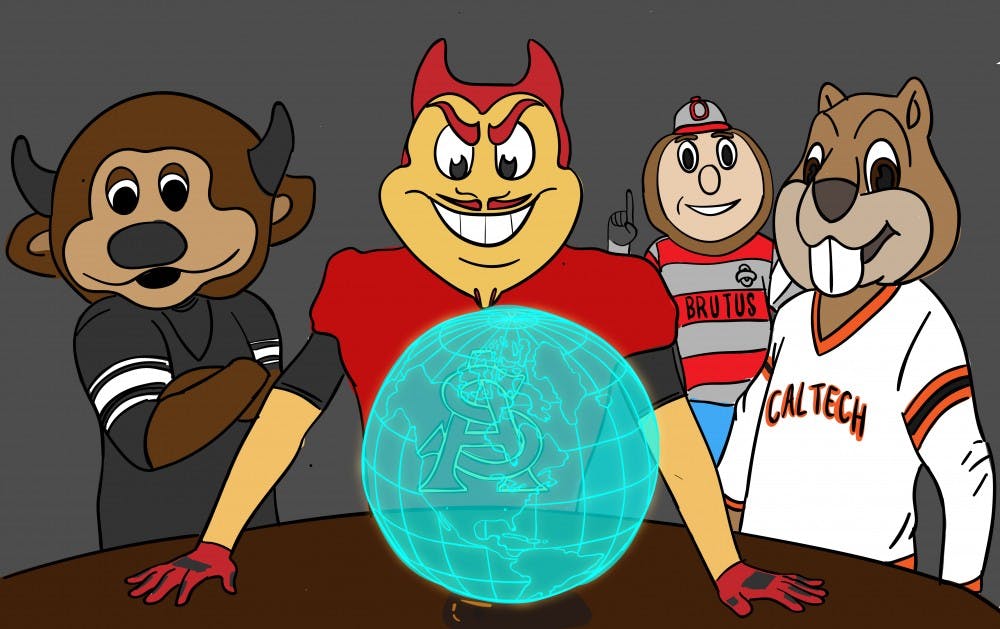ASU helped develop a coalition of over a dozen institutions to help local communities prepare for climate change.
The University Climate Change Coalition, known as UC3, will bring together 13 educational institutions from Canada, United States and Mexico to reduce energy use, engage local communities and innovate climate research.
UC3 was launched at the 2018 Higher Education Climate Leadership Summit in Tempe on Feb. 6, according to a press release. The coalition consists of universities like ASU and the University of Washington, as well as complete systems like the University of California and the State University of New York systems.
Timothy Carter, the president of the climate action organization Second Nature, the group organizing the coalition, said the ultimate goal of UC3 is to work toward the standards set in the Paris Climate Agreement.
“It’s just really thinking about how does the higher (education) sector bring its strength to bare on the question of climate action," Carter said.
Universities in UC3, including ASU, will focus on how to solve climate issues within their neighboring communities and governments.
The 13 institutions will meet with their local governments and citizens over the summer to better understand how the coalition can help them.
“It’s not just higher education doing things for higher education’s sake," Carter said. "This is helping businesses and mayors (and) governors accomplish the goals they want to accomplish."
Carter said UC3's work on regional issues makes it unique.
"The ability to share findings and learning is much more efficiently and effectively done whenever you’re doing it in collaboration with others," Carter said. “I think the fact that this hasn’t happened specifically around cross-sector or place-based climate action is part of what makes UC3 unique.”
Carter said ASU President Michael Crow "had a hand in helping form" UC3.
Elizabeth Cantwell, the vice president for research development at ASU, said she was part of the planning committee for the coalition.
Cantwell said the universities in UC3 will meet in September 2018 to discuss what they learned from their local communities and how to work together to solve their problems.
"We will, by that point, be all at the table saying 'Here's what happened when we convened with our regions, this is what our regional governments, our regional companies and our regional citizens are thinking about and here's how we’re going to work together to solve those problems,'" Cantwell said.
UC3 allows universities to explore solutions to complex environmental problems by sharing research. They can then pass those solutions on to other cities with similar issues.
In addition, Cantwell said the universities in the coalition were asked to increase their energy reduction commitments.
ASU has already agreed to strict energy cuts.
"We’ve already committed to eliminating greenhouse gas emissions from building energy sources by 2025," Cantwell said. "They go well beyond, for instance, whatever agreements were embodied in the Paris Agreements.”
Mick Dalrymple, the director of University Sustainability Practices, attended the Higher Education Climate Leadership Summit.
Dalrymple said he wants to see ASU not only reduce energy use, but also create technology and research that will offset carbon pollution elsewhere the world.
“We want to reduce our footprint as much as possible, but we want to increase our hand print," Dalrymple said. "So, that’s how many inventions can we make in renewable energy, how many research papers can we get published that somehow advance climate solutions."
Dalrymple said that universities in the coalition will serve as examples to their surrounding communities to become more sustainable.
“From where I sit in the University, I believe my role in terms of educating the broader world is ‘Let's prove it. Let's show that it’s possible to do it,’” Dalrymple said.
Reach the reporter at cscragg@asu.edu or follow @monsoonchaser on Twitter.
Like State Press on Facebook and follow @statepress on Twitter.




